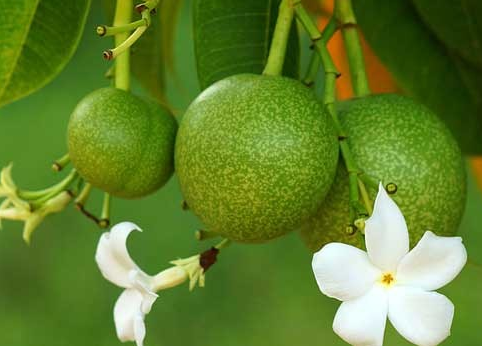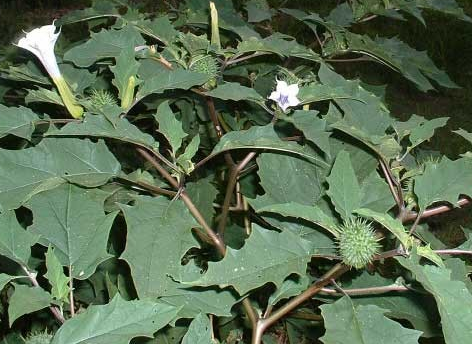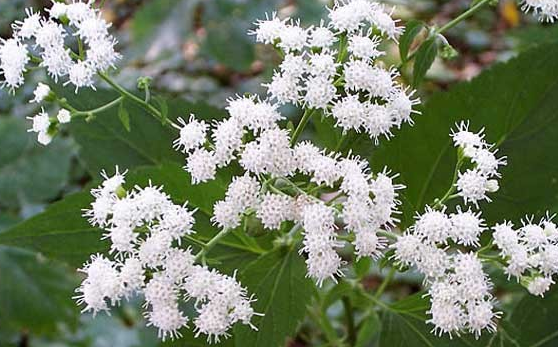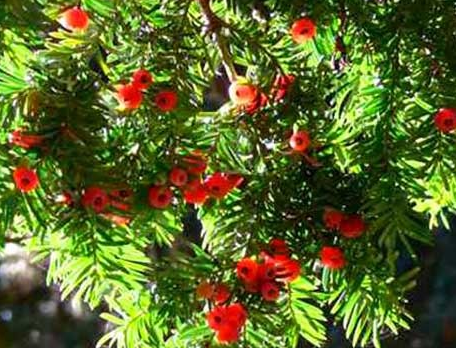(单词翻译:单击)
In the mid-1800s, the story of a man-eating tree captured widespread attention. In a report he wrote for the South Australian Register, Carl Liche, a German explorer, claimed that while exploring Madagascar, he'd witnessed a woman climb the trunk of a large plant and drink its nectar. When the plant sensed her presence, it captured her with its tentacles and pulled her into its body.
19世纪中期,食人树的故事人尽皆知。卡尔·利歇一位德国探险家,他在写给《南澳大利亚记事报》的一篇报道里称,他在马达加斯加岛探险的时候,看见一个妇女爬上一种大型植物的主干去喝它的汁液。当这株植物感觉到她之后,却用触手一样的东西抓住了她,然后把她拽进了自己的躯体。
One hundred years later, a 1950s science writer debunked the legend, asserting that not only was there no such tree, but that no one by name of Carl Liche had ever explored Madagascar. While a tentacle-wielding, man-consuming tree may not exist, a scaled-down version of such a plant does. The man-eating tree of Madagascar may have been an exaggeration of the pitcher plants that grow in Madagascar, Indonesia, Australia, Malaysia and other hot and humid, low-lying areas. The largest of the pitcher plants is known as Nepenthes, and this plant does capture small vermin and lizards in its pitchers (or cupped leaves). The pitcher plant creates a substance that coats the inside of its pitchers. This substance mixes with water that the plant draws up through its roots. Insects and, on occasion, small animals are attracted to the scented water. When they come to drink, they fall into the pitcher, are unable to escape, and the plant draws nutrients from the captured prey. While you certainly won't fall prey to the pitchers of the Nepenthes -- they're entirely too small to hold a human -- you could easily fall prey to the sickness some plants induce. In fact, the following 10 could actually kill you.
在一百年之后的20世纪50年代,一位科普作家拆穿了这个传奇,认为不仅不存在这样的树,而且没有一个叫卡尔·利歇的人到过马达加斯加探险。虽然也许没有用触手捉人吃的树,但却存在缩小版的这类植物。瓶子草类生长在马达加斯加、印度尼西亚、澳大利亚、马来西亚,以及其他炎热、潮湿、低洼的地区,马达加斯加的食人树可能就是这些瓶子草类被夸大的产物。猪笼草是最大的瓶子草,这种植物能用自己的瓶状叶(或者杯状叶子)捉住蜥蜴和小型鸟兽。瓶子草会在瓶状叶内表面产生一种物质,与植物根部吸收来的水分混合在一起。昆虫,偶尔还有些小动物,就被这种带有香味的物质吸引了。他们过来喝这些汁液时,就会掉进瓶状叶里,而且逃不掉,植物便从自己捕获的猎物获取养分。虽然你不可能成为猪笼草的猎物——它们太小,装不下一个人——但你一不小心就会受到某些植物的伤害。事实上,下面这10种植物能将你置于死地。
10.Manchineel
10.毒番石榴

Would you believe that there's a tree so poisonous that you don't actually have to touch it to be harmed? It's called the manchineel tree (Hippomane mancinella), found throughout the Florida Everglades, Central America and the Caribbean. Inhaling sawdust or smoke from the 30-foot (9.1-meter) tall tree may result in a variety of uncomfortable side effects, including coughing, laryngitis and bronchitis. Some reports suggest that simply standing beneath the tree during a rainstorm and being splashed by runoff may result in rashes and itching. Your car isn't even safe from this toxic tree: Park under its low branches, and dripping sap can seriously damage the paint.
有一种植物毒性很大,即使你没有触碰到它也会受到伤害,你相信吗?这种植物就是毒番石榴树,广布于佛罗里达州埃弗格来兹沼泽地、中美洲和加勒比地区。这种树高达30英尺(9.1米),人们吸入伐树时产生的锯末或者木灰会产生很多不舒服的症状,包括咳嗽、喉炎和支气管炎。有报道称,下暴雨时站在这种树下、淋了树上滴落的水,皮肤会起疹、发痒。汽车甚至也会深受其害:停在低矮的枝丫下面,树木滴落的汁液会严重损坏油漆涂层。
Direct contact with the manchineel tree is far more hazardous. Its milky sap can squirt from the tree when twigs are snapped off, painfully irritating the skin and eyes. Ingestion of the deceptively sweet, crabapple-like fruits is known to blister the mouth and cause the throat to swell shut, then inflict severe gastrointestinal problems. These harmful effects result from the toxin hippomane A and B, which are present in every part of the tree. The manchineel tree sometimes grows near the beach, giving it another of its common names, "beach apple." Hapless tourists vacationing on the warm coasts of Central America and the Caribbean often encounter its poisonous boughs with unfortunate consequences. So if you're heading to that region's beach resorts, make sure to avoid the manchineel tree or else your dream vacation could turn into a nightmare.
直接触碰毒番石榴更有危险。折断树枝时会有乳白的汁液喷出,会让皮肤和眼睛感到疼痛。其果实长得像野苹果,看起来好吃,误食会导致嘴巴起泡,咽喉紧闭,随后会引起严重的肠胃问题。这些危害来自A和B两种毒番石榴毒素,它们存在于这种植物的各个部位。毒番石榴有时候长在海岸边,因此它还有一个名字——“海滩苹果树”。到气候温暖的中美洲和加勒比海沿岸度假的无辜游客,常常会遭遇其毒枝危害,结果不堪设想。如果你要去这些地方的度假区,确保远离毒番石榴,否则期待的假期可能变成一场噩梦。
9.Jimsonweed
9.曼陀罗

With pointy leaves and spiky fruit, jimsonweed (Datura stramonium) definitely looks the part of a poisonous plant. Its toothed foliage emits an unpleasant odor and branches from reddish-purple stalks, which grow to a height of 3 to 4 feet (0.9 to 1.2 meters). The plant's fruit is particularly wicked-looking. The green spheres, measuring about 2 inches (5 centimeters) across, are covered with long, sharp spines. Even the nectar and petals of its beautiful white or lavender trumpet-shaped flowers are dangerous. They, like the rest of the plant, are tainted with the toxins atropine and scopolamine.
曼陀罗的叶子和果实都长得很尖,看起来毒性很大。叶子边缘的锯齿会释放一种难闻的气味,枝叶茂盛;主干呈酱色,能长到3~4英尺(0.9~1.2米)高。这种植物的果实看起来很怪异。绿色的球体,直径约2英寸(5厘米),满身又长又尖的针叶。曼陀罗开白色或紫色的喇叭状花朵,虽然十分漂亮,但花蜜和花瓣与其他部位一样很危险,都含有阿托品和车莨菪碱这两种毒素。
European settlers in the New World quickly discovered the potency of jimsonweed, which grows throughout Canada, the United States and the Caribbean. The plant was plentiful at Jamestown, where some colonists made the mistake of having it for dinner as early as 1607. They would have experienced horrific symptoms, including dilated pupils, racing heartbeat, hallucination, delirium, aggressive behavior and possibly coma or seizures. The plant has been linked to darker arts, like witchcraft and voodoo, because of its delirium-inducing and hallucinogenic properties. For most people, though, jimsonweed is a dangerously poisonous plant that's best avoided completely.
从欧洲来到美洲新世界的移民很快发现了曼陀罗的性状,它们遍布加拿大、美国和加勒比地区。詹姆斯敦有很多这种植物,早在1607年,就有殖民者误把曼陀罗当作食物吃了。他们出现了恐怖的症状:瞳孔放大、心跳加速、幻听幻视、精神错乱、争强好胜,还可能昏迷或者痉挛。人们常常把这种植物与邪恶力量联系起来,比如巫术或者伏都教,因为它有致人精神错乱和出现幻觉的特性。然而对大部分人而言,曼陀罗是非常危险的有毒植物,最好避免接触。
8.Aconite
8.乌头草

Aconite (Aconitum napellus) is commonly referred to as monkshood because the top of the flower resembles the monastic head covering. But there's nothing holy about this plant. A perennial, it stands 2 to 6 feet (0.6 to 1.8 meters) tall and produces blue, white or flesh-colored bunches of flowers at the tops of its stalks. Every part of the aconite plant is laced with the toxin aconitine, making it dangerous to consume or even touch.
乌头草(学名为Aconitum napellus),因其花顶状似修女的头罩,通常被称为舟形乌头。不过这花与“神圣”可没什么关系。这是一种多年生草本植物,高达2~6英尺(0.6~1.8米),其茎部会长出一朵朵蓝色、白色,或肉色的花。乌头草的各个部位都含有毒性乌头碱,甚至只要触碰到它都会有危险。
Poisonings from aconite are rare but typically occur when gardeners or backpackers mistake its white carrot-like root for horseradish or some other edible herb. Consuming the plant causes burning in the mouth followed by increased salivation, vomiting, diarrhea, a tingling sensation in the skin, blood pressure and heart irregularities, coma and sometimes death. Just touching aconite can cause tingling, numbness, and in severe cases, heart problems. People have used aconite in the past to intentionally harm people or animals. Nazi scientists used the plant's toxin to poison bullets, while shepherds in ancient Greece laced bait and arrows with aconite to kill wolves that preyed on their stock. From this latter use came another common name, "wolfsbane." Fans of the Harry Potter series will recognize this as the plant Professor Snape brews to help Remus Lupin turn into a werewolf.
一般人很少会因为乌头草中毒,但如果有园丁或者背包客把乌头草类似于白萝卜的根误认为是山葵的根,或是其他食用植物根,就很难避免中毒的情况了。误食乌头草会导致口腔内部产生灼烧感,随之而来的是流涎、呕吐、腹泻、皮肤刺痛、血压和心率失常等症状,重则会导致昏迷甚至死亡。如果是触碰到乌头草,则可能导致四肢麻木、产生特异性刺痛感,情况严重的话甚至会引发心脏问题。过去人们经常使用乌头草来对付那些会伤害到人类的动物。纳粹科学家曾利用乌头草制造带毒的子弹,而古希腊的牧羊人也早已学会在箭上涂抹乌头草的毒,用以和诱饵配合,抵御猎杀羊群的狼,乌头草的另一个常见称号“狼毒”即由此得来。《哈利·波特》系列的粉丝们就会知道,乌头草就是斯内普教授在卢平变身为狼人之时,用来保护哈利等人的植物。
7.White Snakeroot
7.白蛇根草

Most people know that John Wilkes Booth assassinated Abraham Lincoln, but did you know that a plant killed the president's mother? The culprit: white snakeroot (Eupatorium rugosum), a shade-loving weed native to the forests of the eastern and southern United States. This shrubby plant grows to a height of 18 to 60 inches (46 to 152 centimeters) and boasts leaves that are serrated around the edges. Its flowers, which emerge from the ends of the branches in late summer, are small and grow in white clusters. Don't let these beautiful blooms fool you, though; the plant contains high levels of tremetol, a powerful toxin.
很多人都知道是约翰·威尔克斯·布斯刺杀了美国总统亚拉伯罕·林肯,那么又有多少人知道总统的母亲是被植物杀害的呢?罪魁祸首就是:白蛇根草(学名为Eupatorium rugosum)——一种喜阴类植物,生长于美国东部和南部的森林中。此灌木植物高可达18~60英尺(相当于46~152厘米),叶子边缘呈锯齿状。夏末时,白蛇根草的花就会盛放于枝干末端,一簇簇小小的白色花朵竞相开放。不过你千万别被这些绽放的花朵给骗了,此植物含有一种剧毒——白蛇根毒素。
White snakeroot causes "milk sickness," a condition that afflicts people who consume milk or meat from a cow that has grazed on the highly poisonous plant. (Snakeroot is also poisonous to the cow.) Those affected can experience a variety of symptoms, including bad breath, loss of appetite, listlessness, weakness, vague pains, muscle stiffness, vomiting, abdominal discomfort, severe constipation, coma and possibly death. Milk sickness was common until the 1920s when farmers widely recognized white snakeroot as the cause, eradicating the weed from their pastures and fencing them to prevent cows from wandering into the woods to graze. Unfortunately, this discovery came much too late for Lincoln's mother, Nancy, who fought milk sickness for two weeks before passing away on Oct. 5, 1818.
白蛇根草会引发“牛奶病”,人类食用了吃过白蛇根草的奶牛牛肉或其产下的牛奶后,将会遭受“牛奶病”的折磨。(蛇根草的毒性对奶牛同样具有威胁性。)中毒后会引发各种各样的症状,包括呼吸困难、食欲不振、精神萎靡、身体虚弱、有隐约的刺痛感、肌肉僵硬、呕吐、腹部不适、严重便秘、昏迷,甚至死亡。这种“牛奶病”在过去很常见,直到上个世纪20年代,奶农们才广泛认可了“白蛇根草就是罪魁祸首”这一事实。于是奶农们开始铲除牧场里的这类野草,并且围起了栅栏,以防奶牛到树林里去吃草时又误食白蛇根草。然而不幸的是,对于林肯总统的母亲南希来说,这一发现来得太晚了。在与“牛奶病”搏斗了两周后,南希最终于1818年10月5日与世长辞。
6.English Yew
6.英国紫衫

Given the English yew's highly toxic nature, it's fitting that the tree is commonly found growing in church graveyards across Great Britain. Some scholars believe that this tradition started when early Christians incorporated the trees -- which already had spiritual value to the pagans -- into their new religion. Today they stand not as symbols of death, but of the immortality of the soul.
因为英国紫衫有很高的毒性,所以适合生长在英国各地教堂墓地。一些学者认为这一传统在早期基督教徒接纳这种树的时候就开始了——它们对异教徒已经有了精神价值。始于早期基督教纳入树——那些已经拥有精神价值的异教徒进入基督教。现在的紫衫并不是死亡的象征,反而象征着不朽的灵魂。
The English yew (Taxus baccata) is an evergreen tree with needlelike leaves and red arils, or fleshy seed-coverings. It grows to a height of 60 to 70 feet (18.3 to 21.3 meters) and is found throughout Great Britain, but is also cultivated in the southern United States. Every part of the tree is toxic due to taxine alkaloids, except for the aril flesh. Consumption of the leaves, and to a lesser extent the seeds, can lead to increasingly serious symptoms, including dizziness, dry mouth, dilation of the pupils, weakness, irregular heart rhythm and possibly death. Despite its harmful qualities, English yew has been used for a variety of productive purposes. Its wood was valued across Europe for bow-making as early as the Neolithic period, which lasted from approximately 7000 B.C. to 2500 B.C. Later, the Anglo-Saxons explored the tree's medicinal qualities, including yew berries in a 10th-century formula for the treatment of "water-elf disease" (probably measles or chicken pox). More recently, researchers have studied the English yew for its potent antitumor qualities. Today, yew extract is used to formulate the drug paclitaxol, or Taxol, which slows the growth of ovarian, breast and lung cancers.
英国紫衫(红豆杉树)带有针叶、红色假种皮和肉质种子覆盖物,是常青树的一种,高一般在60~70英尺(18.3~21.3米)。它的身影遍布整个英国,也可以在美国南部看到。除了紫衫的果实之外,每个部位因为含有紫衫生物碱而都带有毒性。误食叶子或者一点点种子,会引起严重的症状,包括头晕、口干、瞳孔扩张、虚弱、心律失常,甚至可能死亡。尽管英国紫衫带有毒性,但是它已经用于各种生产目的。早在新石器时代,欧洲人就用紫衫木来制造弓箭。大约在公元前7000~2500年,安格鲁-撒克逊人发现了这种树的药用价值,紫衫果可以治疗10世纪时期的“水之妖精病”(可能是麻疹和水痘)。最近,研究人员研究了英国紫衫的抗肿瘤特性。现在,紫衫提取物已经被用来制定药物紫杉醇或紫杉醇。紫杉醇可减缓卵巢癌、乳腺癌和肺癌的增长。
审校:惠月 编辑:listen 来源:前十网


